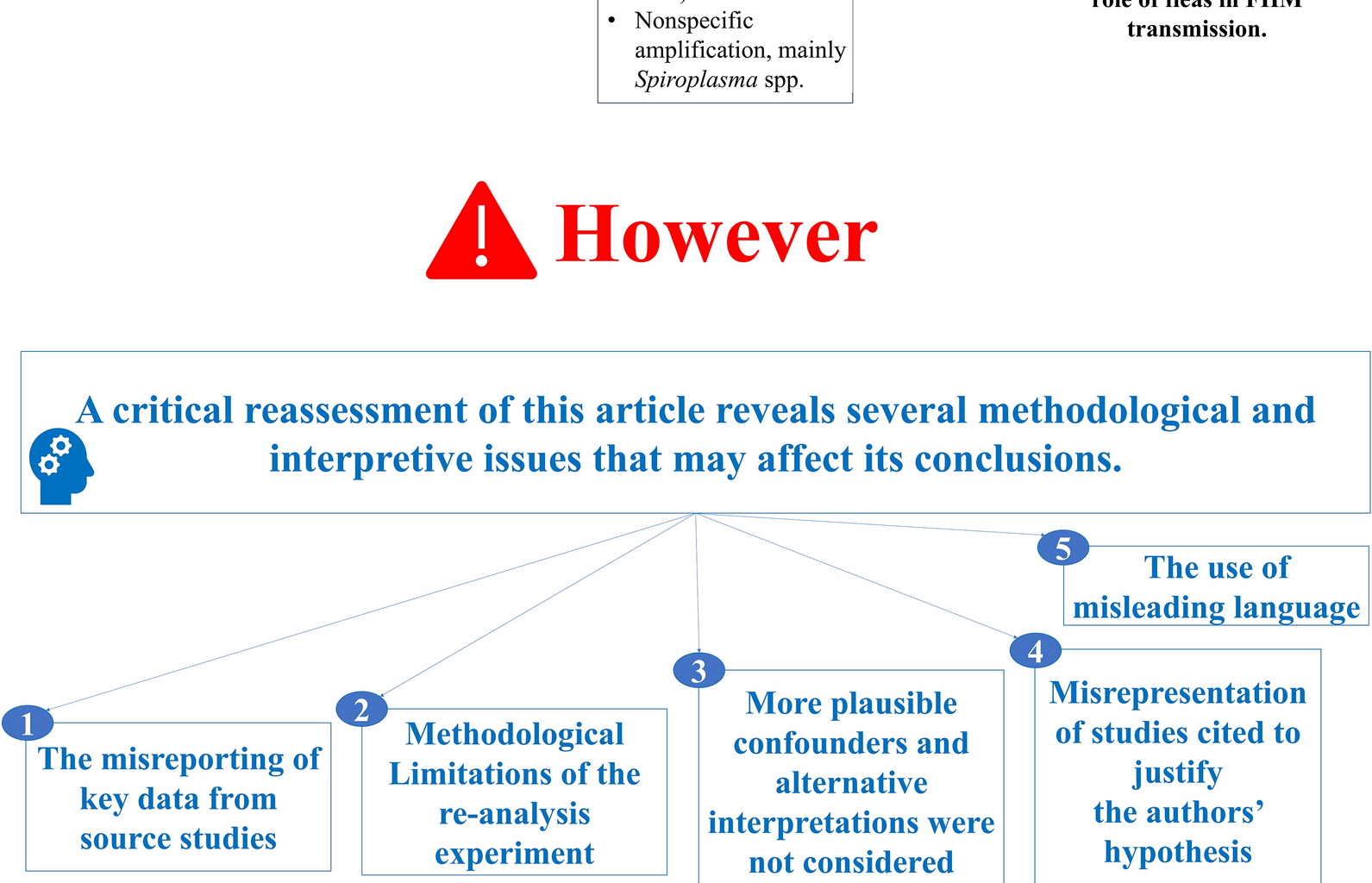Reanalysis of the Thai samples
Stored individual flea samples that previously tested positive by Jensen primer-based PCR without sequencing in the original Thai study [10] were reanalyzed for the meta-analysis, with the aim of evaluating primer specificity and its impact on reported Mycoplasma spp. prevalence. In this reanalysis, both PCR and sequencing were applied, and the observed prevalence was lower (2/67, 3% of individuals) than in the original study (17/50, 34% of pools). Spiroplasma spp. were also amplified in 18/67 samples, while the remaining 47 were negative.
While this reanalysis provides additional data, there are several methodological considerations that may affect its interpretation. The samples had been stored for over a decade, potentially influencing DNA integrity. Additionally, comparisons were made between individual fleas in the reanalysis and pooled fleas in the original study, which are not directly comparable and substantially influence observed prevalence, as noted by Willi et al. [13]. Moreover, even if the reanalyzed fleas came from originally positive pools, this does not imply that each individual flea was infected; a single infected flea would have been sufficient to render an entire pool positive. By overlooking these fundamental differences in sampling design, the authors made inherently invalid comparisons.
They also report in Table 2 that the original pools contained from one to three fleas each, which is mathematically inconsistent. The original Thai study [10] described collecting 226 fleas from 50 cats, with no indication that any were excluded, and did not specify a maximum pool size. It is claimed that 67 reanalyzed fleas originated from previously PCR-positive pools, but a maximum of three fleas per pool across 17 positive pools would yield 51 fleas, not 67. Furthermore, the distribution of the two Mycoplasma-positive, 18 Spiroplasma-positive, and 47 negative fleas across the original pools is not reported, leaving a gap in data interpretation.
Inappropriate grouping of Manvell and Jensen primers into one category
Although the Manvell primer is almost homologous to the Jensen primer, there is evidence that they behave differently in flea studies and should not be treated as equivalent. The Jensen primer has consistently amplified flea-derived Mycoplasma spp. DNA, with sequencing confirmation across multiple studies [5,6,7]. In contrast, the Manvell primer did not amplify Mycoplasma spp. in fleas in either a previous flea study [4] or in the experiments for the meta-analysis (reanalysis of Thai samples and washing experiments). In the reanalysis experiment, the single Jensen-positive flea tested negative with the Manvell primer, which also produced more non-specific results than the Jensen one (Table 4). While validated in cats [3], the Manvell primer may preferentially amplify Spiroplasma spp. in flea samples. Grouping these primers conflates their distinctive diagnostic behaviors and may lead to the unintentional underrepresentation of reliable Jensen primer-derived results.
Washing experiment
The authors studied the effect of flea washing on Mycoplasma spp. prevalence using 20 pools of five fleas each (10 washed, 10 unwashed). The flea pools were tested by utilizing Manvell primer-based PCR and sequencing; all pools tested negative for Mycoplasma spp., while 12 were positive for Spiroplasma spp. Based on these results, the authors concluded that washing does not influence Mycoplasma spp. detection.
However, this experiment was inherently constrained because the infection status of naturally collected fleas was unknown, making it inappropriate to conclude from uniformly negative results that washing had no effect. Moreover, the experiment was conducted on pooled rather than individual fleas, which affects the probability of detecting positives.
Similar experiments need to be designed for future studies that use fleas potentially infected with Mycoplasma spp., for example, through a controlled feeding approach in which fleas are allowed to feed on experimentally infected cats by using flea chambers, as previously described [19].

